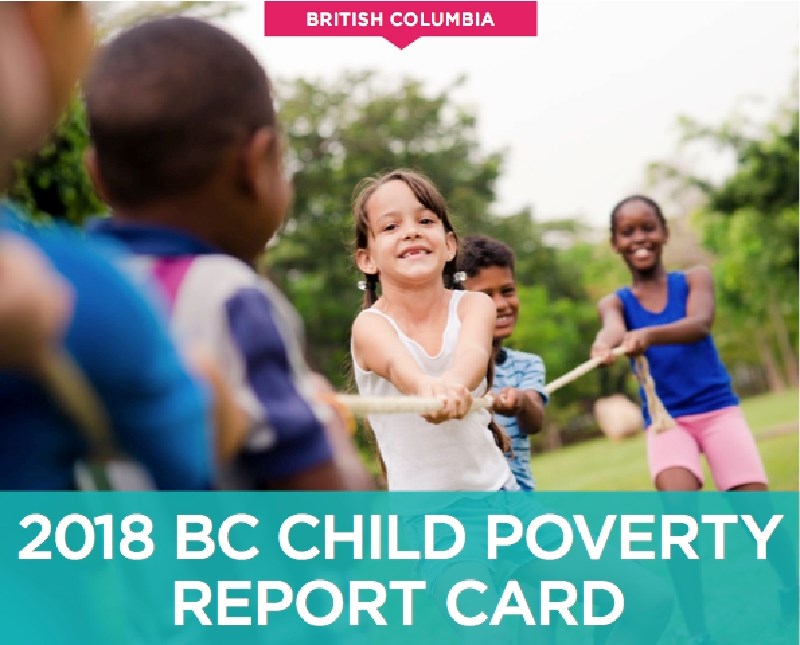One in five children is still growing up poor in B.C., a тАЬprofoundly disappointingтАЭ finding that underlines the challenge facing government anti-poverty efforts, an advocacy group says.
In its annual poverty report card released Tuesday, First Call said the latest data from Statistics Canada show that 172,550 children and youth were living in poverty across the province in 2016, the most recent year for which numbers are available.
B.C.тАЩs child poverty rate, as measured by the Census Family Low Income Measure, is down slightly from 2015, but still above the national rate, the report says.
тАЬItтАЩs actually a very familiar story,тАЭ said Adrienne Montani, provincial co-ordinator with First Call. тАЬWe have one in five kids poor. ThatтАЩs where weтАЩre at and thatтАЩs what the data tell us.
тАЬWe still have a big problem with a very high level of child poverty.тАЭ
The situation is even worse for Indigenous and immigrant children and those in single-parent families, the report says.
Montani said that while some of the numbers are trending downward, the pace is тАЬglacialтАЭ and thereтАЩs still a lot of work to do. тАЬIf we want to go to root causes, itтАЩs because income inequality continues to grow,тАЭ she said.
The report found that children and youth are deprived of the security and supports they need to thrive, while wealth accumulates тАЬin the hands of fewer and fewer individuals.тАЭ
First Call, which is a coalition of regional and provincial organizations, gave credit to the federal government for introducing a more generous Canada Child Benefit in 2016, which the report says is already having an impact.
The B.C. government, meanwhile, passed a poverty-reduction law that aims to cut child poverty in half.
тАЬSo now weтАЩre waiting for the March plan,тАЭ Montani said. тАЬWeтАЩve seen some of the things weтАЩve been recommending тАФ like the child-care investments and housing investments тАФ coming through in the budgets already.тАЭ
First Call wants to see the provincial government boost welfare and disability rates and redesign the Early Childhood Tax Benefit to cover more children and double its maximum payout to $1,320 a year per child.
тАЬIf we see those things, then weтАЩre optimistic that weтАЩll start to see the numbers coming down,тАЭ Montani said.
Shane Simpson, B.C.тАЩs minister of social development and poverty reduction, said First CallтАЩs report reinforces the governmentтАЩs decision to focus its legislation on cutting child poverty.
тАЬThatтАЩs where weтАЩll go over the next number of years,тАЭ he said. тАЬWeтАЩre looking at a whole range of things in order to be able to accomplish the goals and the targets that we put in place in the legislation.тАЭ
Simpson said the government has examined the positive impact of the Canada Child Benefit as well as things that have worked in other jurisdictions.
тАЬClearly, weтАЩre going to roll those out around the budget in February,тАЭ he said. тАЬBut weтАЩre looking at all of these options.тАЭ
Simpson noted that the NDP government, which took power in 2017, already has taken steps that will have an impact on future numbers.
He pointed to recent investments in child care and affordable housing, as well as earlier moves to increase the minimum wage and wipe out fees for adult basic education and English-language learning.
тАЬThe response is going to be a government-wide response,тАЭ he said. тАЬIf itтАЩs just my ministry, itтАЩs not going to work. It really does have to be a whole number of ministries coming together. ThatтАЩs what weтАЩre doing right now.тАЭ



